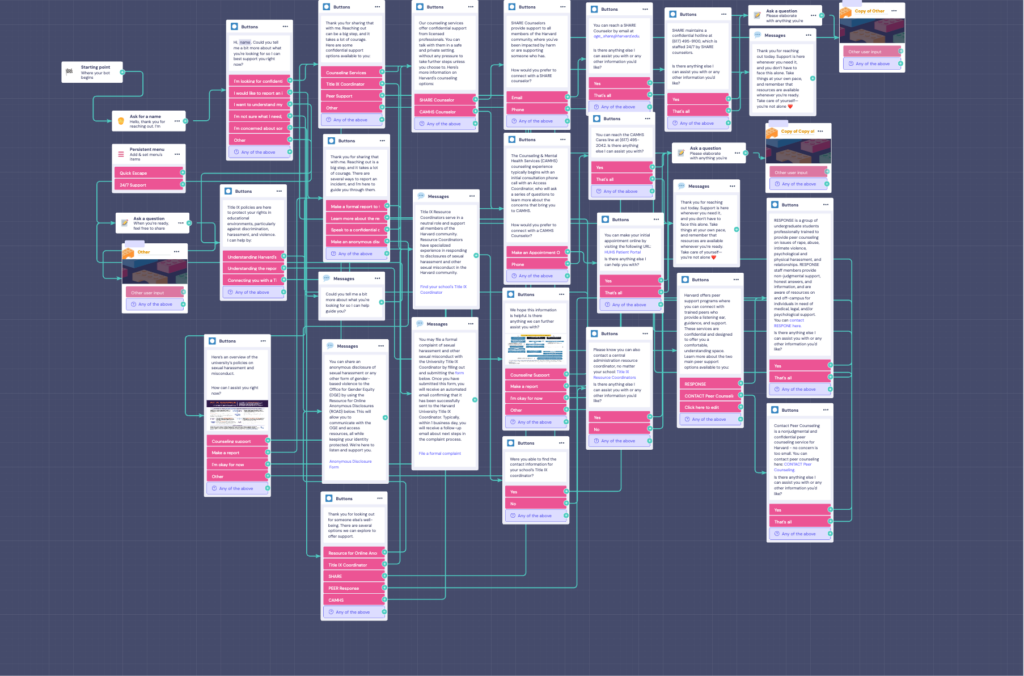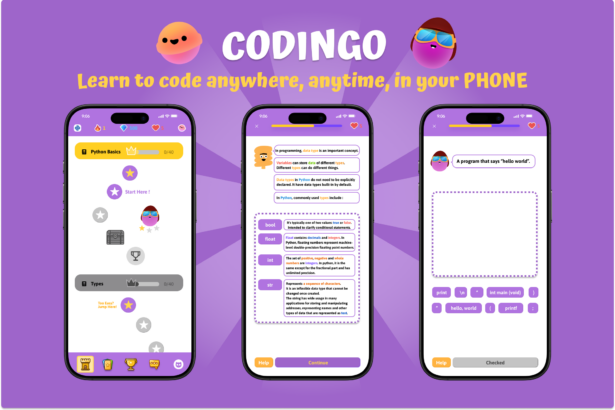Gender-based violence (GBV) is a notorious issue on college campuses, with research indicating that 1 in 4 females experience GBV during their college years (Miodus et al., n.d.). Though universities may have resources to support survivors, navigating these services can be difficult as information is often spread across various departments and platforms, leaving students unsure of where to start or whom to contact.
Recognizing the complexities of navigating the support system in a university bureaucracy, I designed a chatbot assistant for integration on the Harvard College Title IX website. By guiding users through personalized resource pathways, the chatbot connects students to support resources best suited to their needs.
Product Demo

This tool is grounded in five main principles:
- Accessibility: integrate the tool on a centralized platform where students can easily access Title IX support.
- Empathy: offer supportive language and thoughtful prompts designed to ease the experience of seeking help.
- Complement Human Support: the tool does not replace Title IX coordinators, but rather serves as an initial touchpoint that guides students toward available resources.
- Customized Resource Pathways: guide users through questions to connect them with the most relevant resources based on their specific needs.
- Streamlined User Flow: design a straightforward, intuitive interaction that minimizes cognitive and emotional load.
“Don’t start by building a new table; start by coming to the table.” (p. 84)
Design Justice: Community-Led Practices to Build the Worlds We Need
Sasha-Costanza Chock
This quote deeply resonates with my approach to learning design. Rather than attempting to reinvent the wheel in this project, I wanted to amplify existing Title IX support structures at the university. I believe that learning design is most effective when grounded in a deep understanding of the current ecosystem and its strengths. By listening to stakeholders and identifying existing efforts to address an issue, we can uplift design solutions through an asset-based approach to center on the needs of those directly impacted.
References
Costanza-Chock, S. (2020). Design Justice: Community-Led Practices to Build the Worlds We Need. Cambridge, Massachusetts, The MIT Press.
Miodus, S., Tan, S., Evangelista, N., Fioriti, C., & Harris, M. (n.d.). Campus Sexual Assault: Fact sheet from an intersectional lens. American Psychological Association. https://www.apa.org/apags/resources/campus-sexual-assault-fact-sheet



